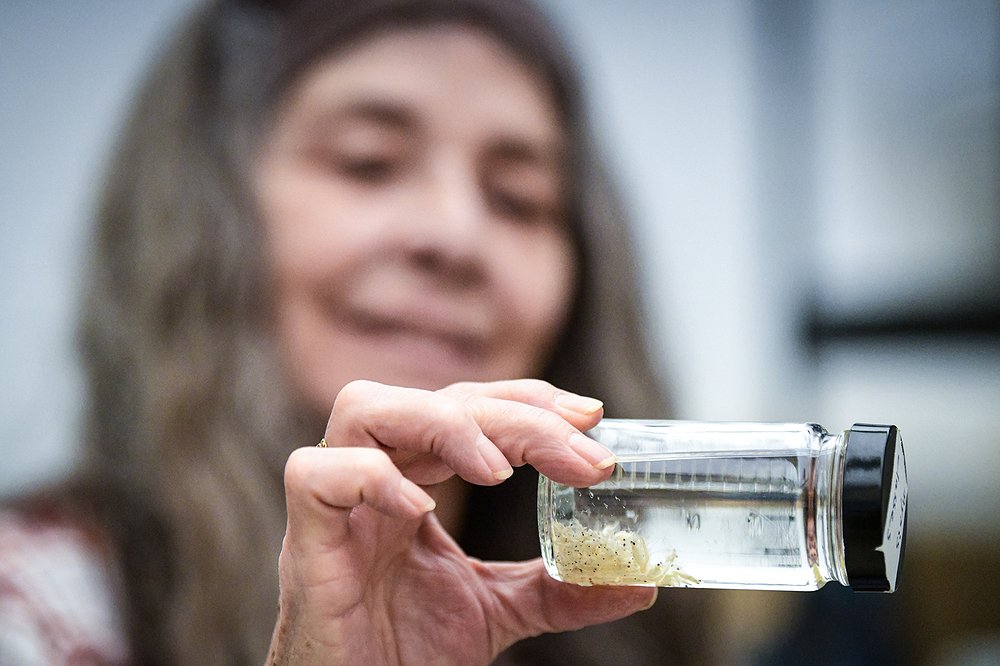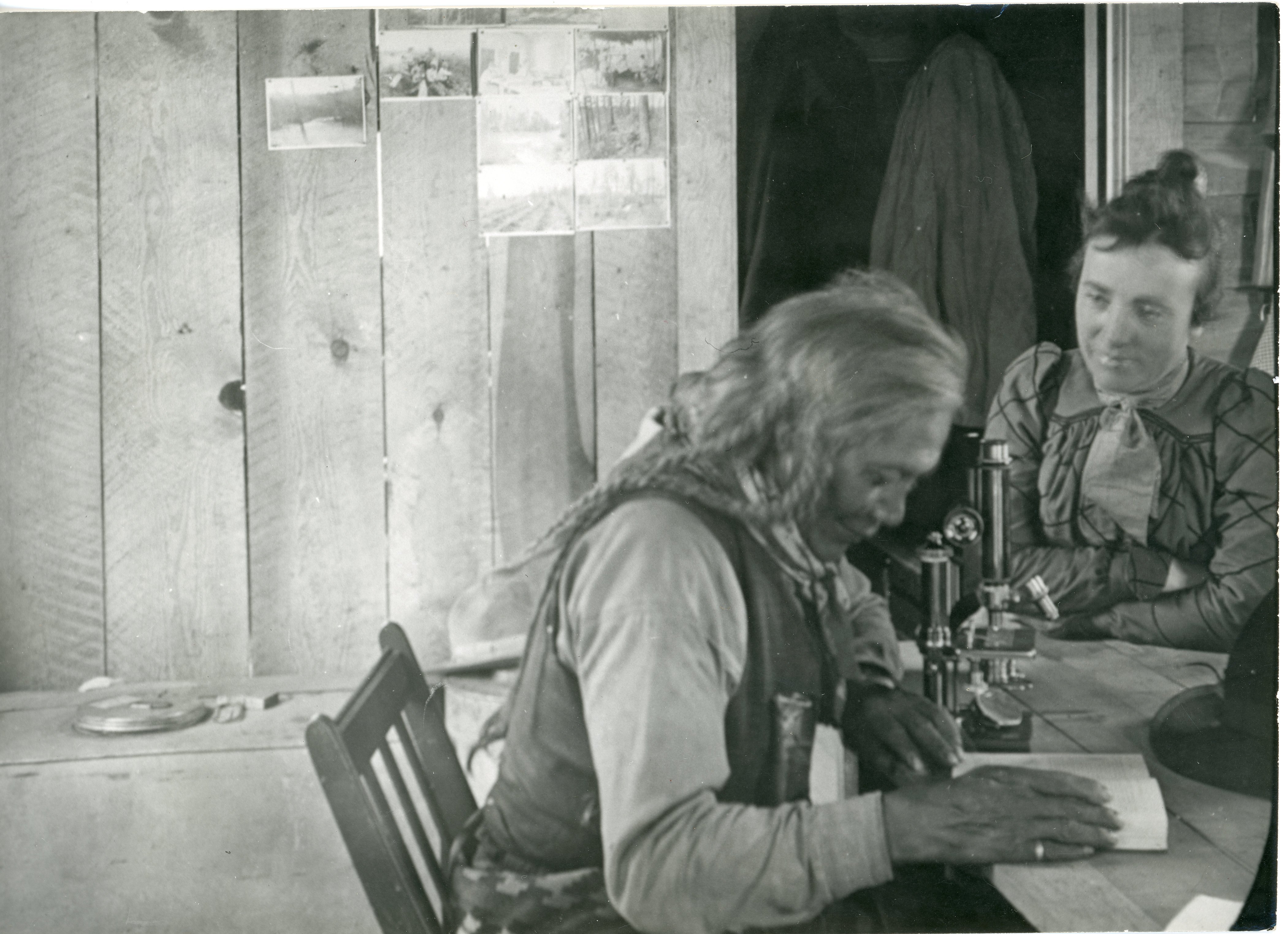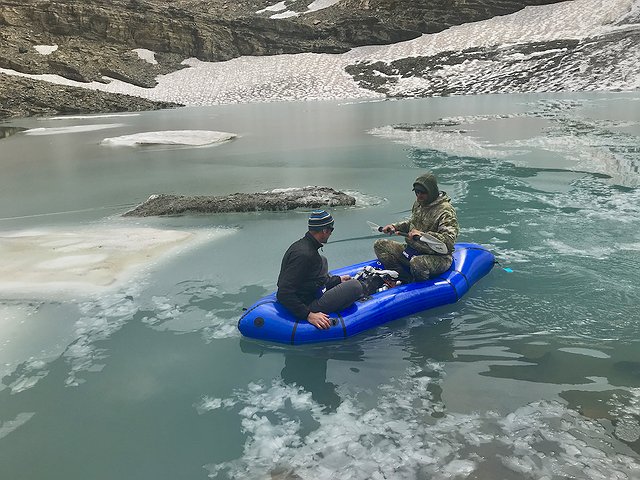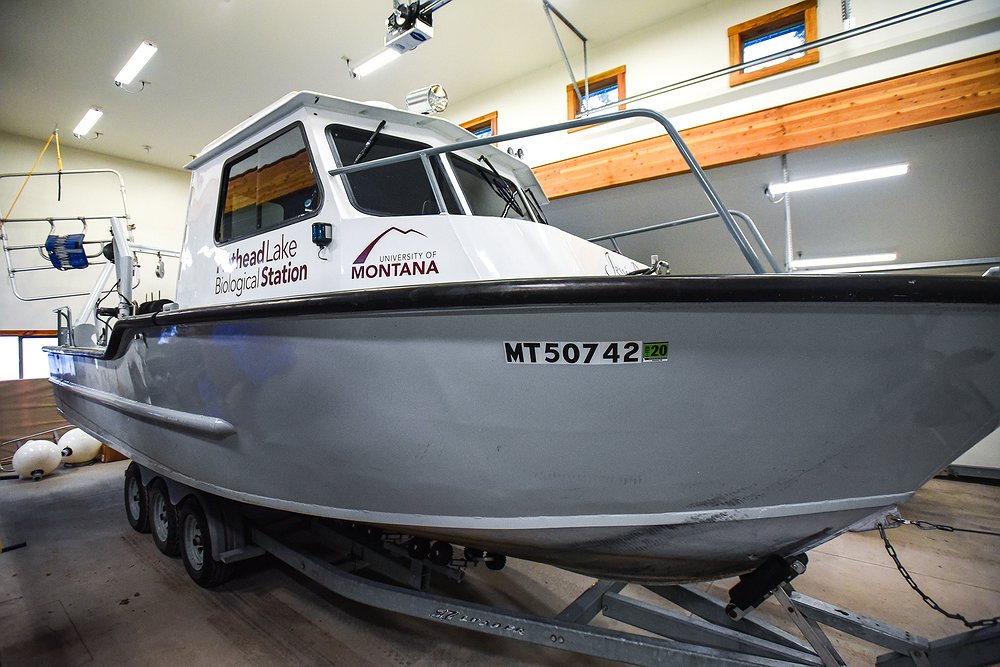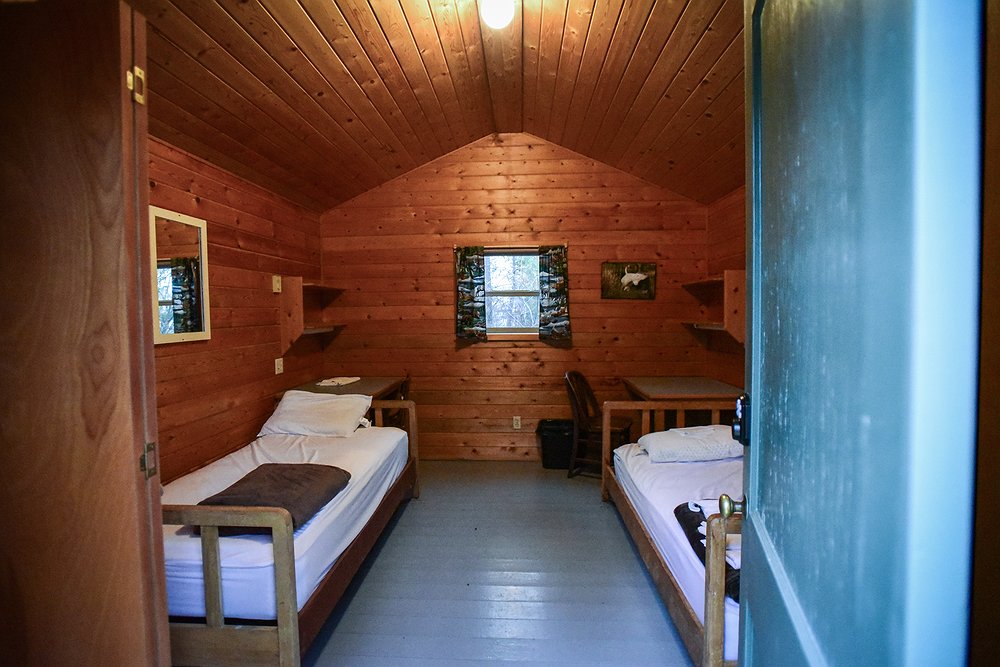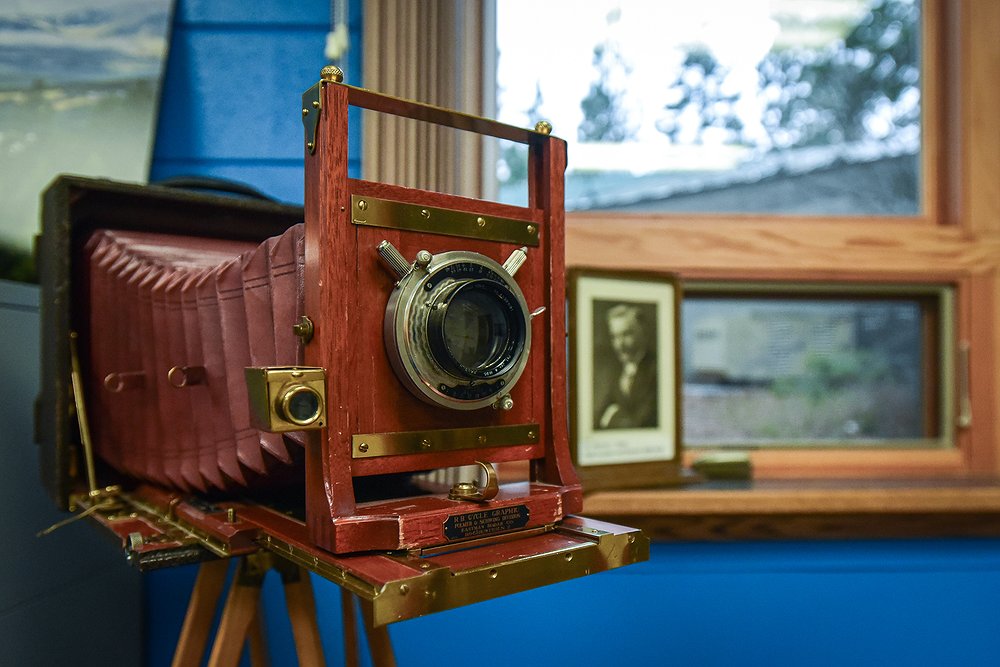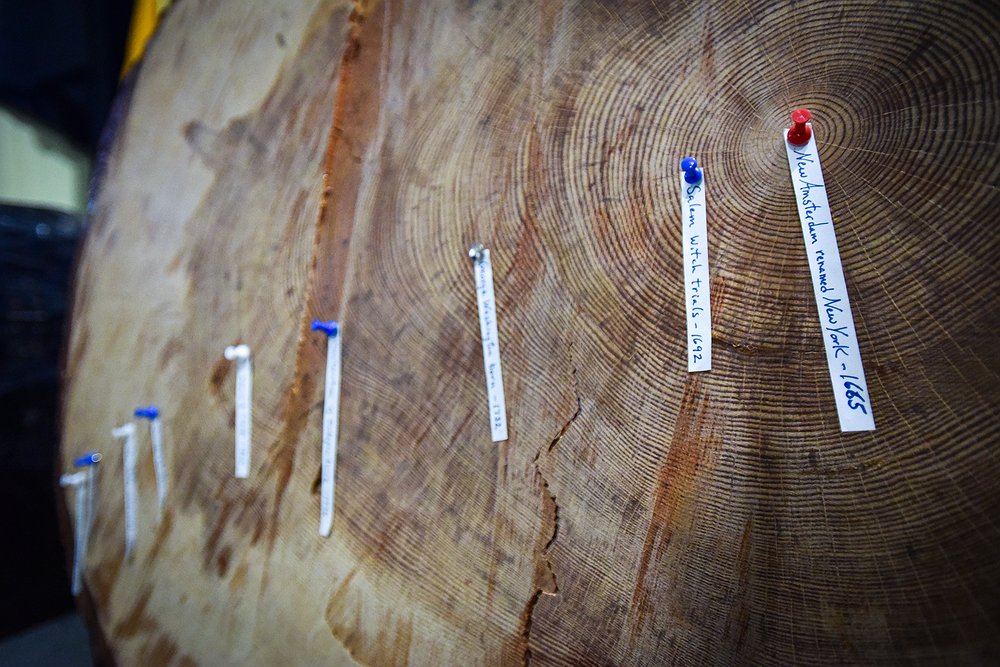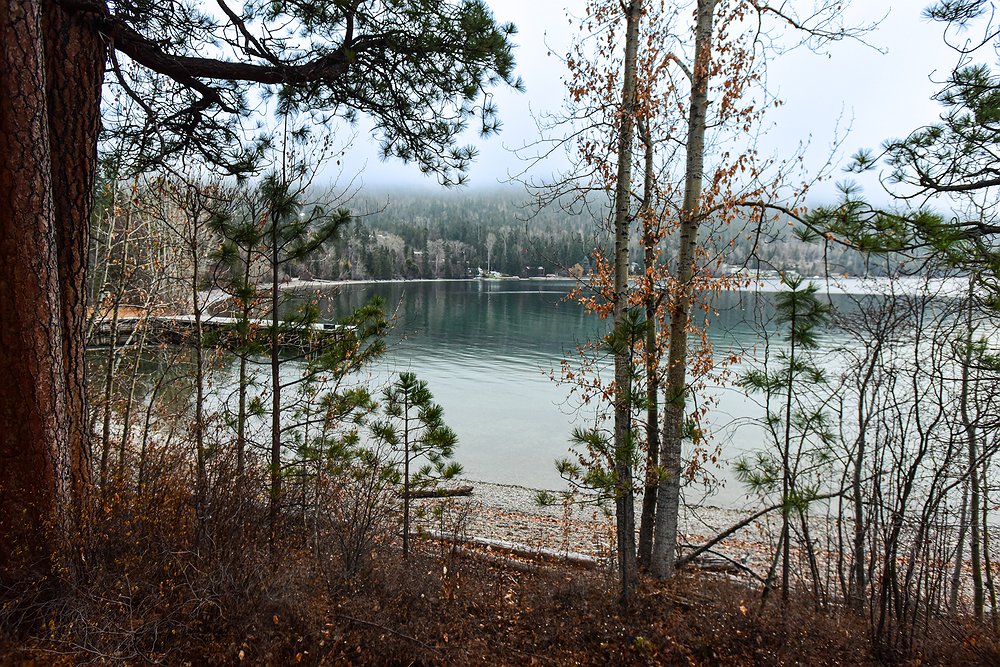Science of the past and future — Flathead Lake Biological Station studies the Crown of the Continent
On a winter morning in January, the Flathead Lake Biological Station sits still beneath a layer of fog as the clear, cold water in Yellow Bay shifts beneath quiet winds. While the station, created to monitor the waters of Flathead Lake and its watershed, is less crowded in the winter, research projects and scientific minds still occupy the halls of the campus.
Research assistant Marcy Mead sits in one of the station's many labrooms on the property, evaluating dozens of samples of algae and phytoplankton from Flathead Lake under a microscope. Next to her sits a jar of mysis shrimp — an invasive species that has offset the ecological course of Flathead waters, each a small, almost translucent, crustacean with black beady eyes.
Through her microscope, she surveys what makes the Flathead watershed special, something the station has been doing for over a century.
The year 2024 marks the 125th anniversary of the Flathead Lake Biological Station, a world-renowned research facility that, according to current director Jim Elser, is for both the world of science and the people of the Flathead.
The station, as an administrative unit within the University of Montana system, conducts college courses and research focused on the Crown of the Continent ecosystem.
The station is commemorating the milestone with the multi-year FLBS125 anniversary initiative, which launched this month, to reflect on its scientific legacy and accomplishments while looking ahead to the future.
Since its establishment in 1899 by founder Morton J. Elrod, the station has hosted students from all over the world to learn about biology.
Today the station hosts undergraduate and graduate students, offering a range of topics: conservation ecology, alpine ecology, landscape ecology, lake ecology, the evolution of animal behavior and more.
For Elser, that educational legacy has been “pretty profound.” Elser specifically acknowledged Elrod’s educational pursuits as a notorious part of the station’s legacy. A pioneer photographer, talented biologist and scientific mentor, Elrod laid the foundation for others to build upon, he said.
“We're up there still, looking at the waters he did, documenting these things coming into Flathead Lake,” Elser said.
Through research and education, the station has accomplished significant feats, said Tom Bansak, associate director of the biological station.
“What I'm most proud of … is their use of science to drive sound management and sound policy,” Bansak said. “That’s the real value.”
Under Elser’s leadership, the station has maintained its respected reputation, one that took off under the leadership of Jack Stanford, who upon accepting the position in 1980 was tasked with making the biological station a high-class research facility.
BUT PERSISTENT concerns linger among the completed successes about the future of the watershed — something that station officials anticipate dealing with in the next century.
For one, invasive species will “probably never go away,” Elser said. The past introduction of invasive species disproportionately hurt native fish populations in the Flathead watershed, and new invasive species continue to threaten waters.
The introduction of mysis shrimp in the 1970s, which were planted to be another food source, brought native species, like kokanee and bull trout, to minuscule numbers, all while making nonnative fish, like lake trout, thrive.
Zebra mussels, which have spread rapidly across the United States since the 1980s, were first detected in Montana in 2016. The mussels cause detrimental effects on native fish and plant populations and are a costly species to deal with.
Though mussels have not been detected in Flathead Lake. The threat to the lake and other water bodies requires inspections of watercraft before entering the water.
While the station has worked on the issue, such as developing early-detection techniques for invasive mussels, invasive species are just one issue Elser anticipates to persist into the future.
Another concern, Elser said, is climate change.
“The thing that I worry about the most for the watershed and the health of the communities is climate trends and large-scale fire,” Elser said.
Fire, which thrives in dry and hot conditions, has the potential to change the quality of the lake in unfavorable ways. If there is a massive fire near a fork of the Flathead River, Elser said, that will likely negatively affect water quality in the valley.
Experiments on the effects of fire on water quality have been completed, but the effects on lakes and their ecology — specifically big lakes — have not been studied as extensively. According to Elser, that makes the area and topic unique for station biologists.
The station has monitored the lake looking at the impacts of climate change. Data will continue to be collected over decades, allowing scientists to discern climate trends over a longer period of time.
“Luckily, that is why we have our monitoring program in place,” Elser said.
FUNDING FOR the station comes from a mix of sources. Currently, only 25% comes from the state. Half comes from research grants and indirect costs that are returned on those grants. The last quarter is philanthropic donations from the community.
At the end of 2023, the University of Montana and the Flathead Lake Biological Station were awarded $6.6 million from the Environmental Protection Agency’s Columbia River Basin Restoration Program for pesticide reduction. The program looks to reduce pollution to improve water quality while also engaging with the public on ways to reduce toxic pollution.
Despite ecological challenges and a century of extreme growth, the station has withstood decades of uncertainty and decades of success. Through the multi-year FLBS125 initiative, the biological station aims to continue its research and educational missions and offer new fundraising opportunities.
Right now, the station looks forward to drawing on state funds from the long-range building fund to make updates to some facilities. Ultimately, the goal is to create a Flathead Watershed Discovery Center, where community members can gather and learn about the station.
“If we can bring more support from the community to the station, we will be able to do even more to expand our knowledge of the lake and how to keep it in a great condition for the future,” Elser said.
Out in the field, Elser spends time in the summers in Glacier National Park, studying the newer lakes that melting glaciers have created.
It isn’t far off from what the station’s founder Morton J. Elrod did more than a century ago. Before the national park system even existed, Elrod was studying and photographing the massive glaciers and pristine water bodies that enchant so many still today.
“It’s sort of a back-to-the-future kind of project,” Elser said about his current efforts to document new lakes.
In another 125 years, Elser said, he hopes that another future director will sample Glacier National Park lakes too, celebrating another century plus of success, perseverance and high-quality research in a new age.
Reporter Kate Heston can be reached at 758-4459 or kheston@dailyinterlake.com.
 A group of people stand at the University of Montana Biological Station, on Flathead Lake, about 1906. Chief Michelle, of the Pend d'Oreille on the Flathead Reservation, is second from the right. Morton J. Elrod, the biological station's founder, took the photo. (Photo courtesy of the Northwest Montana History Museum)
A group of people stand at the University of Montana Biological Station, on Flathead Lake, about 1906. Chief Michelle, of the Pend d'Oreille on the Flathead Reservation, is second from the right. Morton J. Elrod, the biological station's founder, took the photo. (Photo courtesy of the Northwest Montana History Museum)



















